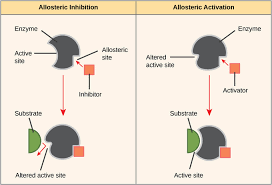CLASSIFICATION OF ENZYMES
Definition– Enzymes are proteinaceous substance that acts as biological and organic catalysts which alter the rate of chemical reactions that takes place in the living systems.
TYPES OF ENZYME
If we see the structure, enzymes can be grouped into two types-
- Simple Protein Enzymes/Pure Enzymes- Such enzymes are completely made up of proteins, e.g. pepsin, urease, trypsin etc.
- Conjugated Enzymes/Binding Enzymes- Such enzymes consist of both protein and non-protein part. Here protein part is called Apoenzymes whereas, non-protein part is called Cofactors. Cofactors are coenzymes, prosthetic groups and metal activators.
Some enzymes don’t occur in the absence of substrate and called Inducible enzymes, e.g. Nitrate reductase (found in nodules of leguminous crops).
CLASSIFICATION
On the basis of reactions that the enzyme catalyzes, enzymes are broadly classified into seven groups.
- Oxido-reductase– Such enzyme catalyzes the transfer of electrons from one molecule (the Reductant) to another (the Oxidant). This group of enzymes usually utilizes NADP or NAD+ as cofactors.
Ex- A– + B → A + B– (here “A” is the reductant or electron donor & “B” is the oxidant or electron acceptor).

- Transferase- Such enzymes catalyze the transfer of groups. Like transfer of one carbon group to another molecule, e.g. Hexokinase, Transaminase etc.
Illustration– X group + Y → X + Y group (here “X” is the donor while “Y” is the acceptor).
- Hydrolases- Such enzymes catalyzes the hydrolysis of the compound, i.e. the addition of water molecule, examples of hydrolase enzymes are esterases including lipases, phosphatases, glycosidases, peptidases, and nucleosidases
e.g. C6H22O11 → C6H12O6 + C6H12O6
- Lyases- Such enzymes cause the removal of a group of atoms from the substrate and cause addition of 2nd group other than hydrolysis oxidation and reduction, often forming a new double bond or a new structure. E.g. carboxylase, fumerase, adolase etc. the reverse reaction is also possible but two substrates are required for reverse reaction.
- Isomerases- Such enzymes convert a molecule from one one isomer to another. Isomeric changes are happened through intramolecular rearrangement in which bonds are broken and formed. Isomerases catalyze reactions like glycolysis and Carbohydrate metabolism.
Such reaction is like – A-B → B-A
- Ligases- these types of enzymes catalyze the synthesis of different types of bonds, hence also named as synthetase. Such enzymes catalyze the joining of two large molecules by forming a new chemical bond.
Ab + C → A – C + B
Read more…
WHAT IS ENZYME- NATURE AND PROPERTIES
Very nice content bhaiya thank you so much
Thanks dear.